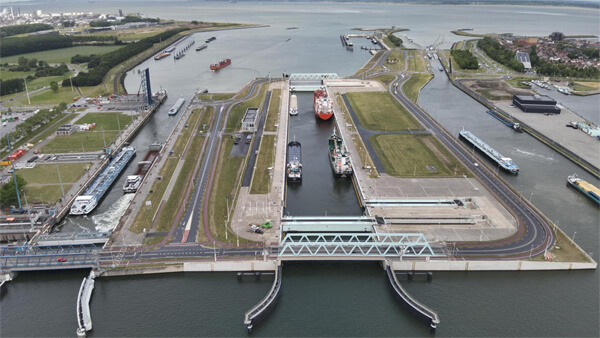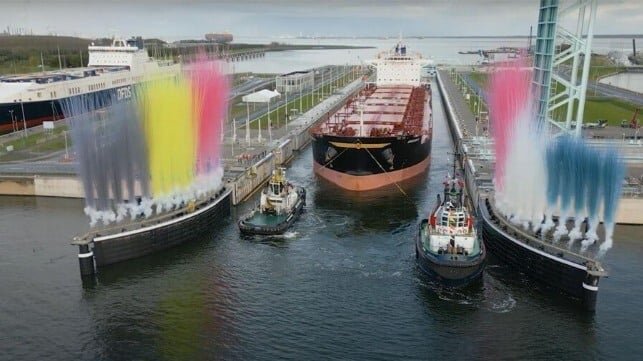The New Lock at Terneuzen: Expanding Capacity for Shipping
The new lock at Terneuzen in the Netherlands officially opened to traffic today, August 1, marking a critical expansion in capacity for shipping heading to the port of Ghent and connecting between the Netherlands, Belgium, and France. It is part of an effort to expand inland shipping and meet the need to handle larger vessels.
Construction of the new lock took seven years and had a cost of approximately €1.2 billion ($1.4 billion). Officials for the North Sea Ports highlight the critical need to accommodate larger ships, noting that two-thirds of the Ghent port area is only accessible via the canal, and the old locks were becoming too small for modern shipping.
Key Features of the New Lock
The two original locks, dating back to 1968, were becoming inadequate for the demands of modern shipping. The new lock, with a length of 427 meters and a width of 55 meters, is significantly larger and can accommodate vessels with a draft of up to 12.5 meters regardless of tidal conditions.
Additionally, the new lock serves as a primary flood barrier and is designed to handle the expected rise in sea level. It is equipped to handle deeper vessels that could only be accommodated at high tide in the past.
Ceremonial Opening and First Passage
The lock was dedicated by King Willem-Alexander of the Netherlands and King Philippe of Belgium on October 11, 2024. The bulker Bregaglia (89,772 dwt) from Switzerland made the ceremonial first passage, becoming the largest vessel to sail on the Ghent-Terneuzen Canal and the largest ship ever to sail to Ghent.

Test locking before the new lock (center) officially opened on August 1 increasing shipping capacity to Ghent (Nieuwe Sluis Terneuzen)
Current Limitations and Future Plans
The new lock has a maximum depth of 16.44 meters but is limited by a roadway tunnel that passes under the canal. Further dredging is required to fully utilize its capacity, which is currently limited to vessels of a maximum of 366 meters in length and with a beam of 49 meters or less.
Discussions are underway between Flanders and the Netherlands about potential modifications to the canal to support additional shipping and further enhance its capacity.
Since its opening, the new lock has already facilitated increased traffic to the port of Ghent, and its strategic location ensures smoother navigation for vessels connecting between the Netherlands, Belgium, and France.

